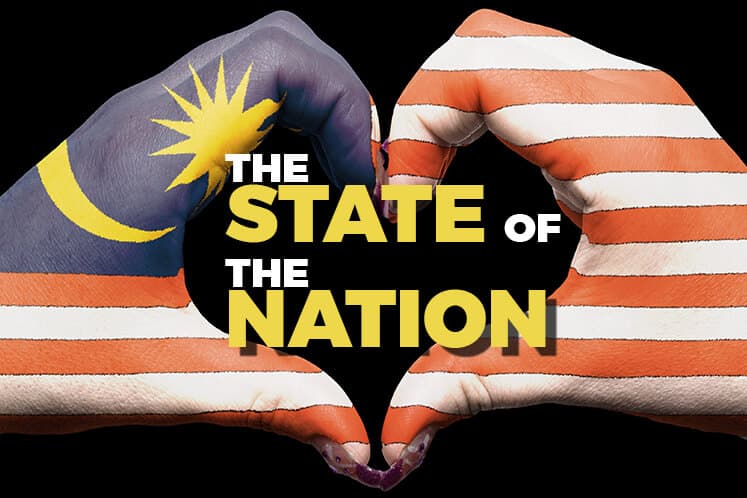
This article first appeared in The Edge Malaysia Weekly on July 8, 2019 - July 14, 2019
MORE contributions to the Employees Provident Fund (EPF) stand to be taxed next year. Tax-savvy individuals would know that when they next file their income tax returns for assessment year 2019 (YA2019) early next year, the RM6,000 relief for the 11% statutory EPF contribution will no longer be combined with the annual life insurance premium. As it is, the tax relief would be separated to RM4,000 for EPF and RM3,000 for life insurance starting YA2019.
Local and foreign tax residents who previously claimed the full RM6,000 life insurance relief but do not contribute to EPF would pay up to RM840 more income tax next year if they fall under the top 28% tax bracket.
EPF contributors with at least RM60,000 annual income (RM5,000 a month) and whose life insurance premium is more than RM3,000 a year (>RM250 a month), would see a net RM1,000 increase in relief combined. This works out to RM80 to RM280 tax savings, depending on whether you are in the 8% or 28% tax bracket.
EPF contributors without life insurance coverage, however, would have to pay at least RM160 to RM560 more income tax next year, with the relief for EPF contributions in FY2019 reduced to RM4,000 from RM6,000 previously.
The Employees Provident Fund lauded the Budget 2019 move to separate tax relief for EPF contributions from that for takaful and life insurance — “even though it reduces the tax shelter element of EPF contributions” — recognising that the contributions “fall under different aspects of a comprehensive social protection system”.
The penetration rate of life insurance and family takaful — measured as the percentage of Malaysians who own at least one individual or group life insurance policy or family takaful certificate — was little changed at 41% last year, according to Bank Negara Malaysia’s 2018 Financial Stability and Payment Systems Report.
While encouraging more breadwinners to have life insurance coverage expands the social safety net for their dependents and next of kin, should the EPF tax shelter be reduced at the same time?
Already, most Malaysians are not saving enough for retirement, with two-thirds of EPF members reportedly having less than RM50,000 in savings. Employers who want to help with retirement savings can consider increasing the employers’ contribution from the mandatory 12% or 13% (income below RM5,000 a month) to the maximum of 19%. That is because employers’ contribution to the EPF of up to 19% of the salary does not incur personal income tax as it is not counted as part of employment income.
It is not hard for one’s EPF savings to get taxed. Based on the new, reduced RM4,000 relief for EPF contributions, someone earning above RM36,364 a year (RM3,030 a month with zero bonus) would see their EPF savings subjected to some level of income tax, back-of-the-envelope calculations show.
That means that an average skilled worker could well have his or her EPF savings subject to some level of tax, given that the median monthly wage for skilled workers was RM3,600 in 2017. About 36.8% of wage earners in Malaysia are deemed skilled employees and their average income was RM4,574 in 2017, according to data from the Department of Statistics Malaysia.
There was some relief when personal income taxes were adjusted lower by 2% each for those in the 5%, 10% and 16% brackets from YA2018. However, the savings were not because a lower amount of EPF contributions was subject to tax, rather, the percentage of taxes was lowered. For example, someone earning RM5,000 a month (zero bonus) would have contributed RM6,600 a year to the EPF and fallen under the 10% tax bracket for YA2017, but is now under the 8% tax bracket for YA2018 and YA2019.
If he or she does pay any life insurance premium, depending perhaps on employment coverage, a total of RM2,600 of the contribution would be subject to income tax, compared with RM600 previously due to the change in the level of tax relief for EPF contributions starting YA2019.
At 8%, the tax on RM2,600 unsheltered EPF contribution would be RM208 a year or RM17.30 a month. Put another way, if the entire RM6,600 EPF contribution of someone earning RM5,000 a month is fully exempted from income tax, the person would have RM208 extra to spend.
The difference between the old and new EPF tax relief ceiling is RM160 in payable tax for the person earning RM5,000 a month without personal life insurance coverage. This is given that the amount of EPF savings subject to tax was RM600 when the relief was RM6,000 — which works out to a tax of RM48 a year. The amount of the employees’ EPF savings that are taxed rises in tandem with the personal income tax bracket.
Someone earning RM10,000 a month — who contributes at least RM13,200 a year to the EPF and pays about RM12,580 in tax annually as he or she falls under the 24% tax bracket — is actually paying RM2,208 in taxes on income that is actually EPF retirement savings they cannot spend.
If the concern is that the lifting of the RM4,000 cap on EPF contributions would benefit the rich more than middle-income taxpayers, policymakers can still consider raising the cap only for those who fall in the lower and middle-income tax brackets to put more money into the pockets of middle-income professionals and wage earners.
Age can also be a factor in determining what should be the right level of tax and statutory contribution, as seen with other changes made in Budget 2019. These are some of the areas policymakers should consider as they revamp the tax regime to be more competitive regionally.
Save by subscribing to us for your print and/or digital copy.
P/S: The Edge is also available on Apple's AppStore and Androids' Google Play.